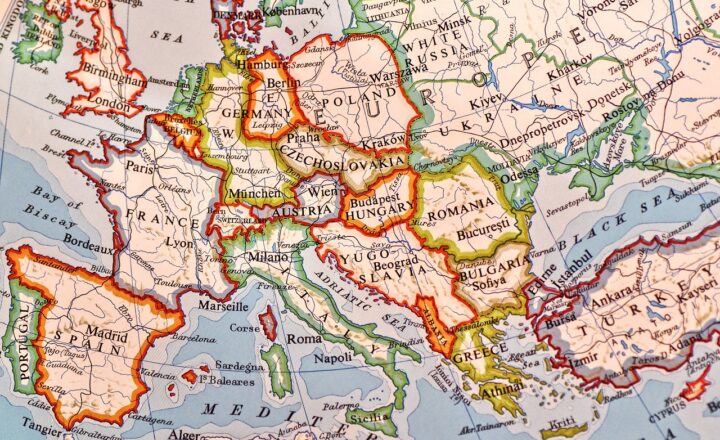How Trade Agreements Work and Their Impact on the Global Economy
November 10, 2024

Trade agreements are defined as pacts made between two or more nations that outline the rules for conducting trade. These agreements can significantly influence global economics by determining how goods and services are exchanged across borders, and they aim to reduce barriers to trade such as tariffs, import quotas, and other regulations. A comprehensive understanding of trade agreements is essential for businesses, policymakers, and consumers, as these treaties shape economic relations and impact national growth trajectories.
1. What Are Trade Agreements?
A trade agreement is an arrangement between two or more countries aimed at facilitating trade and ensuring fair practices in international commerce. The key components of trade agreements typically include:
- Reduction of Tariffs: Imposing lower taxes on imported and exported goods, making them cheaper and more accessible to consumers and businesses alike.
- Trade Norms: Establishing rules regarding trade practices, worker’s rights, intellectual property, and environmental regulations, which help create a level playing field for nations involved in trade.
- Dispute Resolution Mechanism: A framework for resolving trade disputes that may arise under the agreement, providing a structured process for negotiations or adjudication.
Trade agreements can be bilateral (between two countries), regional (among countries within a specific area), or multilateral (involving multiple countries from various regions).
2. Types of Trade Agreements
Various types of trade agreements exist, each serving distinct purposes. Here are the most notable ones:
- Free Trade Agreements (FTAs): These agreements remove or reduce trade barriers between member nations. An example is the North American Free Trade Agreement (NAFTA), which facilitated trade between the US, Canada, and Mexico.
- Customs Unions: These agreements establish a common external tariff for non-member countries while allowing free trade among member countries. The European Union (EU) starts as a customs union before evolving into a single market, with significant integration among member states.
- Common Markets: This type of agreement allows for the free movement of goods, services, capital, and labor among member countries. The EU functions as a common market for its member states, promoting economic integration.
- Economic Partnerships: These agreements go beyond trade liberalization to cover broader areas such as investment, lending, and regulatory cooperation. Asia-Pacific Economic Cooperation (APEC) is one such example, focusing on economic growth across its member nations.
Each of these agreements has the potential to foster economic collaboration, leading to stronger ties and improved growth outlooks for the involved countries.
3. How Trade Agreements Affect the Global Economy
Trade agreements have profound consequences for the global economy, influencing everything from job creation and economic growth to environmental policies and labor practices. Here are several key areas where trade agreements play a significant role:
a. Economic Growth and Development
Trade agreements can stimulate economic growth by opening up access to new markets. When countries reduce tariffs and remove trade barriers, businesses can expand their customer base, resulting in increased production, job creation, and higher incomes. Emerging markets, in particular, benefit from trade agreements that allow them to enter developed markets with less friction.
b. Job Creation and Displacement
While trade agreements can lead to job creation in some sectors, they can also result in job losses in others. Industries that are less competitive may struggle against imports and face downsizing. Policymakers need to implement protective measures and retraining programs to support workers displaced by trade agreement-related changes.
c. Consumer Benefits
Trade agreements often lead to lower prices for consumers. By importing goods from countries where production costs are lower, consumers can access a wider variety of products at more affordable prices. Additionally, improved competition may lead to better quality products, benefiting consumers further.
d. Environmental and Labor Standards
Trade agreements increasingly include provisions intended to uphold environmental protections and labor rights. As countries engage in trade, the integration of such standards becomes paramount to ensure that economic progress does not come at the expense of sustainable development and fair labor practices. Countries may incentivize compliance with standards by imposing trade penalties or prohibiting imports from violators.
4. Trade Agreements and Globalization
The rise of globalization has been both supported and challenged by trade agreements. While they are instrumental in promoting interdependence among nations, resulting in enhanced economic cooperation, globalization has sparked nationalistic sentiments against perceived threats to local jobs and industries.
Countries must therefore strike a balance between pursuing trade agreements and addressing the concerns of their citizens regarding globalization. This often leads to political debate and the need for revising trade rules to protect local interests without stifling economic growth.
5. The Future of Trade Agreements
As the global economy evolves, so too will trade agreements. Current trends suggest that these agreements will increasingly focus on:
- Digital Trade Regulations: With the rise of e-commerce and digital services, new agreements will likely include specific provisions regarding data flows, cybersecurity, and intellectual property related to digital goods and services.
- Sustainability Measures: Future agreements may place greater emphasis on environmental protection and climate change mitigation, requiring countries to adhere to standards that reflect global sustainability goals.
- Inclusivity and Equity: Trade agreements are gradually shifting to reflect a broader spectrum of stakeholders, focusing on equity and inclusivity in trade benefits, ensuring that small businesses and marginalized communities also benefit from international trade.
The dynamic nature of global trade means that negotiations will continue to shape how countries interact economically. Individual nations’ priorities and the ever-changing political landscape will dramatically influence the content and direction of future trade agreements.
Conclusion
Trade agreements are vital instruments of international economic relations, driving opportunities for growth, competition, and cooperation. They impact not just businesses and economies but also citizens by shaping the availability and affordability of countless products and services. A well-informed populace and transparent discussions around trade agreements will empower nations to pursue policies that maximize benefits while addressing legitimate concerns associated with globalization.
Understanding how these agreements work and their implications for the global economy is essential for all stakeholders involved in trade, including governments, businesses, and consumers, as they navigate the complexities of an increasingly interconnected world economy.








